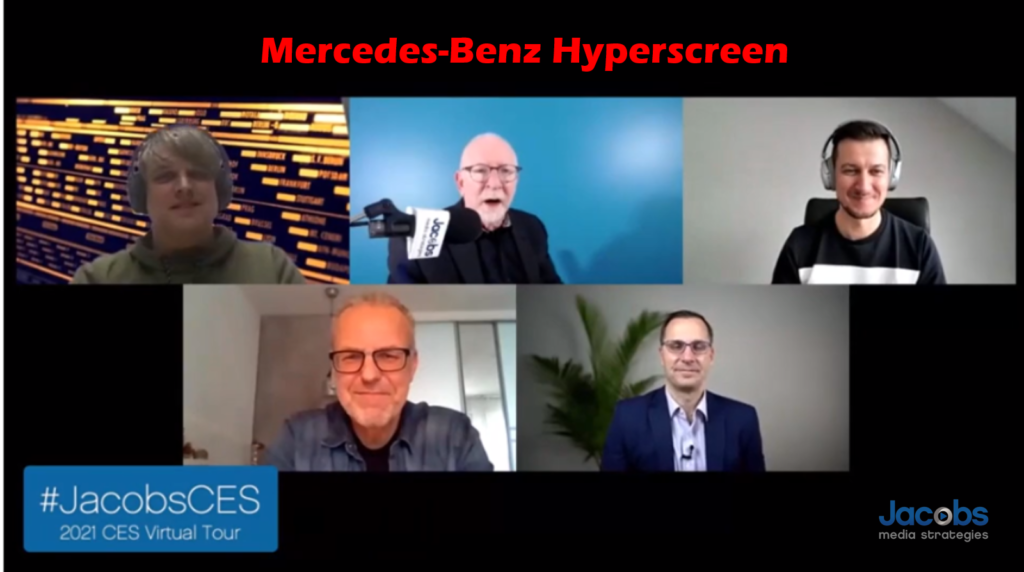
Got Zoom fatigue?
A lot of people are getting tired of virtual meetings, birthdays, and even Super Bowl parties. But this technology isn’t just going to be with us for a few more months. It’s going to be a part of our culture, our families, and our professional lives for years to come.
Last month, Jacobs Media joined the many companies and organizations in the radio broadcasting business literally forced to pivot to a virtual convention. The NAB and RAB, PRPD, Morning Show Boot Camp, Christian Music Broadcasters, and others all presented virtually in 2020.
In our case, we converted our on-the-scene CES tours to a virtual event. We used the Zoom platform to record some of the sessions, but opted for a virtual/social program called Remo to simulate going to an actual conference.
There were 8-top tables, sponsor booths, and a stage – similar to what you’d experience at an in-person convention. We built in “networking” breaks so attendees could hang out, table hop, and do at least some of the things you’d do at convention center or hotel ballroom.
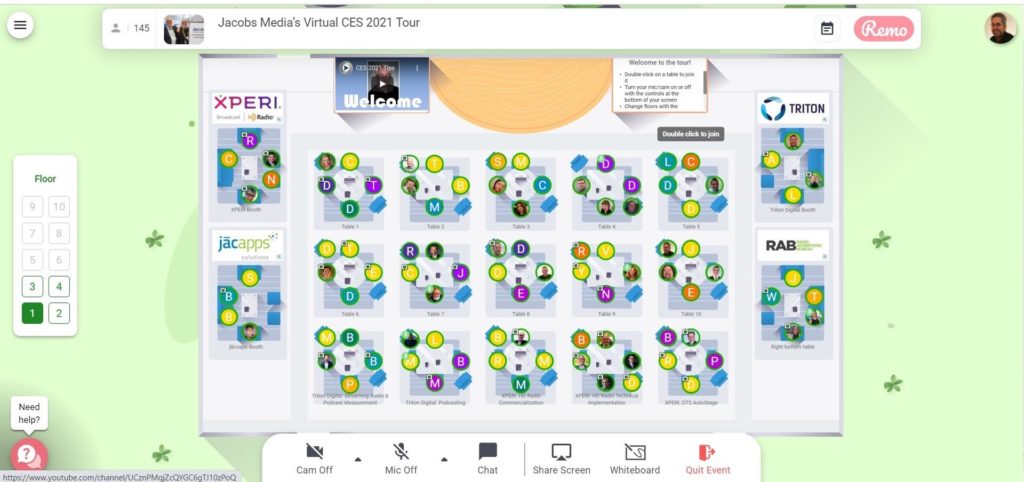
We learned a lot from this experience – what we’d do similarly, as well as what we’d change up next time. Next time? There’s a pretty good chance we’ll do another virtual industry gathering this year because not only can they work, but I’m not expecting in-person conventions will return to “normal” over the next many months.
Of course, no one really knows. Even summoning my inner-Fauci doesn’t really provide insights on just how long we’ll be in the COVID wilderness. When you think of some of the guesstimates made last year at all levels of government and health care, it becomes clear we’re still hacking our way through this catastrophe.
And that means it’s on all of us to “control the controllables.” I’ve spoken to many in our industry who keep talking about when radio returns to “normal,” but there’s really nothing any of us can do to expedite that process.
What we can do is take matters into our own hands – look for areas of opportunity, growth, and ways in which to leverage our brands to generate revenue. That’s what all the organizations and companies that typically produce conferences are having to do. And at the company, cluster, and station levels, it’s a similar exercise in pivoting, innovating, and reinventing.
Every radio broadcaster needs a Zoom strategy – that is, how can we best use this technology to continue to build our brands, while producing content and events that can capture an audience and accompanying revenue.
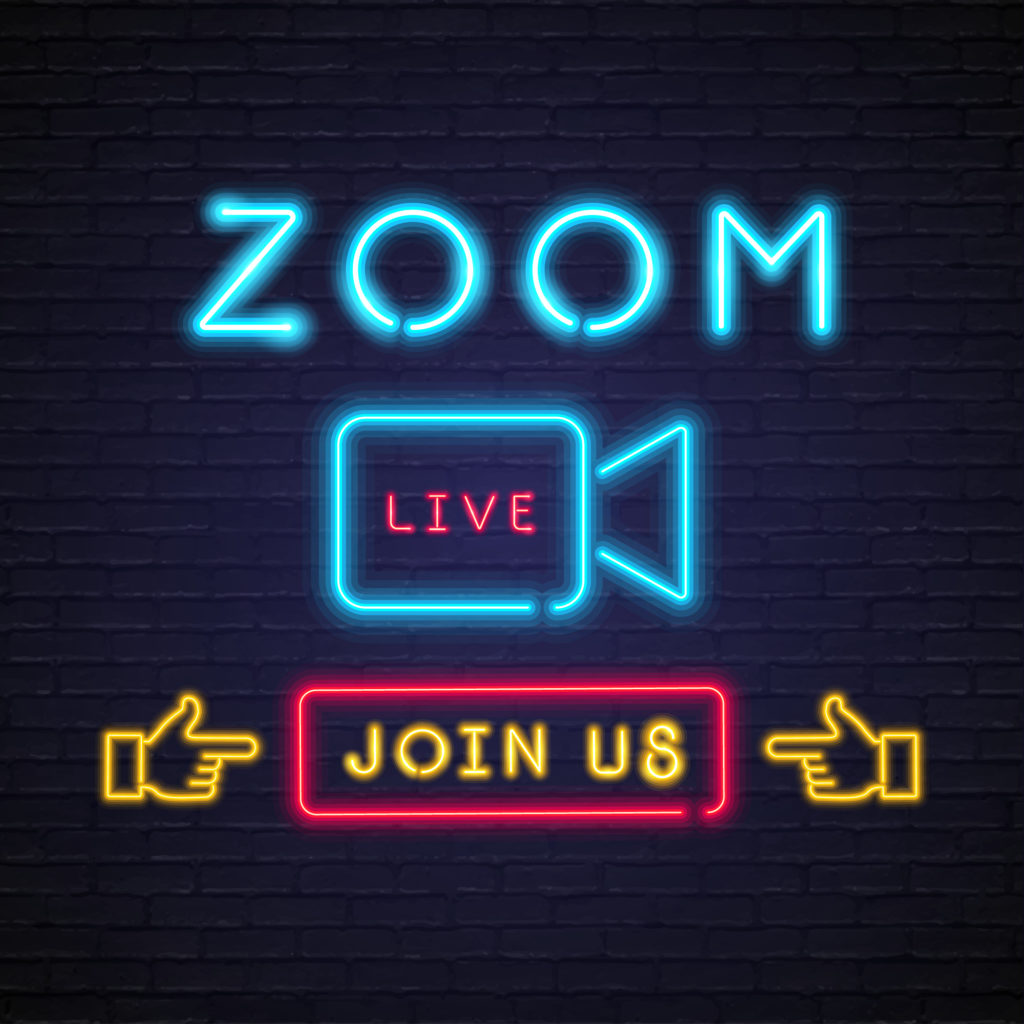 I’m using the Zoom brand here eponymously. That’s what brands like Kleenex, Xerox, iPod, and Taser became – the household names for brands we all use. While competing platforms like WebEx, Skype, Teams, and Go-To-Meeting are still very viable, Zoom has jumped out of the pack to become the way most of us now refer to virtual meetings and conferences.
I’m using the Zoom brand here eponymously. That’s what brands like Kleenex, Xerox, iPod, and Taser became – the household names for brands we all use. While competing platforms like WebEx, Skype, Teams, and Go-To-Meeting are still very viable, Zoom has jumped out of the pack to become the way most of us now refer to virtual meetings and conferences.
A new question in this year’s Techsurvey 2021 asked about how frequently radio fans have started using Zoom and competing platforms. While our mega-study is now out of the field, the data has not yet been cleaned and weighted. But the results, based on more than 40,000 in-tab interviews reveal more than one-third use this type of technology weekly or more often. And of them, nearly half enjoy using platforms like Zoom.
That’s key information that we’ll be delivering to radio broadcasters soon, breaking down our data by age, gender, ethnicity, and of course, format preference. But at those aforementioned levels, you shouldn’t be surprised to hear us conclude virtual meeting technology has rapidly become a mainstream way in which many of us communicate with one another – in just one year.
That’s the ironic part. In the last five years, many radio companies had made important strides in their quest to learn and ultimately harness event marketing – concerts, comedy shows, food festivals, flea markets, memorabilia shows. For many stations, these events became part of the larger budget strategy, including hiring staff to manage them. Many stations have become dependent on event marketing in order to make their numbers, while building their brands and strengthening their community presence.
But COVID-19 deep-sixed all that, forcing most radio stations to shelf its event marketing plans. Many are simply waiting it out, hoping the pandemic will run its course. As our culture and way of life returns, so will these mass audience events.
Or will they? And how long are we talking about before stadiums, arena, auditoriums, and theaters are sold out? How long before bars and clubs are teaming with people?
You don’t know. And neither do I. And all the experts on the planet can’t agree on timetables.
So what’s a station to do?
Control the controllables, of course.
And that means quickly going to school – not just what it takes to plan and execute live gatherings , but learn how to handle this new wrinkle: virtual events.
The good news is that much is being written on the topic. Among them vFairs published an article last year, “Pros and Cons of a Virtual Conference.” It’s a pretty extensive list of the advantages and disadvantages. And while they provide detail on each of these points, here are the Cliff’s Notes:
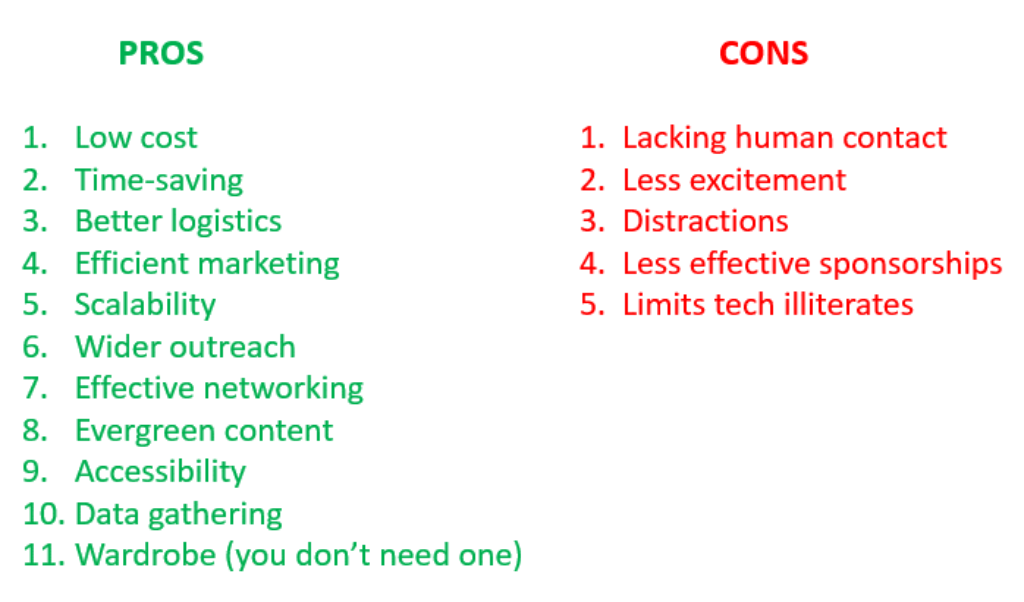
On the HubSpot blog, Rachel Leist wrote a post called “How to Sell Out Your Next Event (+ Tips From INBOUND Marketers)” that provides more detail.
Here are a few favorites that are both logical and essential to pulling off a successful virtual event:
Ask early registrants, panelists, and keynoters to write blog posts
This is a great way to generate interest in your event, whether it’s a virtual music festival or a reunion of DJs in your market. Seeing and hearing about your event on other people’s platforms adds credibility and creates more attention.
Purchase paid ads on social media
This has also become a tried-and-true tactic. Of course, there’s also promoting the event on your air, your website, your mobile app, and your social media assets.
Promote the fun stuff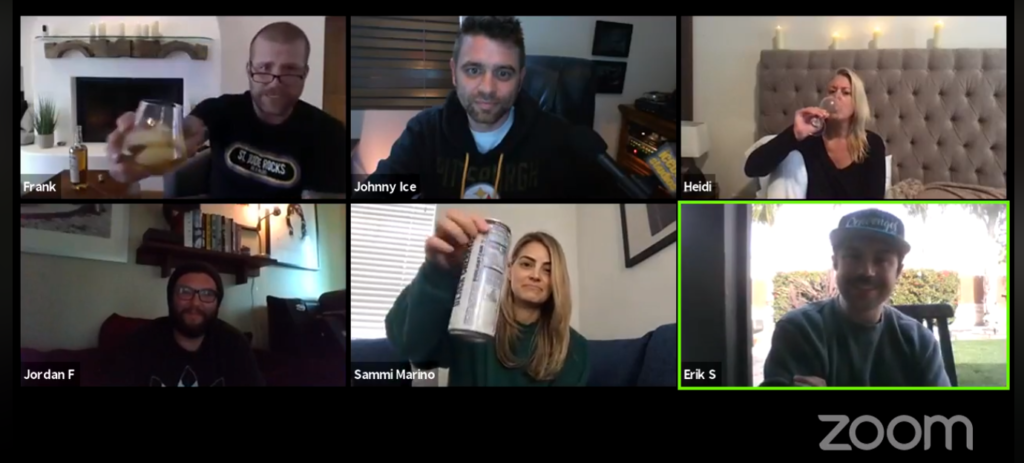
Trivia contests, “Ask Me Anything” sessions, “happy hours,” and networking time at the event are all features that can make events stand out and get noticed. Our CES 2021 tour on the Remo platform allowed attendees to “socialize” with one another, something that proved to be very popular.
Get John Legend to speak at your event
This was a running joke in the HubSpot blog post, but the idea of nailing down a popular celebrity as early as possible will obviously put butts in virtual seats.
It is actually much easier to nail down a famous person for a Zoom event rather than trying to cajole them to fly to Orlando or Austin for an in-person conference. This is the time to think big, like the Drive in Chicago did when they persuaded Queen’s Roger May to plug their “Friday Night Sing-Alongs” in Chicago last spring.
The vFairs and HubSpot articles are good starts. Then my staff and I went to work and came up with a few others we’ve seen work – or we implemented ourselves:
Come up with a hashtag for your event
This is something Lori Lewis was preaching back in the Vietnam War, and it’s an often overlooked step. And Seth Resler reminds me to make it visible on all slides and visuals, along with the Twitter handles of panelists and guest speakers.
Keep it memorable, simple, and repeat it often. Getting a social buzz the day of the event can pay off in other ways, and also helps your sponsors garner attention.
Create personalized speaker cards
Credit to Bradley Metrock who puts together great conferences. I spoke at his “Voice of the Car Summit” in San Francisco a couple years back. Each speaker/presenter received a virtual card, perfect for “socializing.”
This makes it easy for your friends and guests to promote your event on their social platforms. It also makes it easy to standardize “the look” of your event. (All that’s missing is the event hashtag and my Twitter handle.)
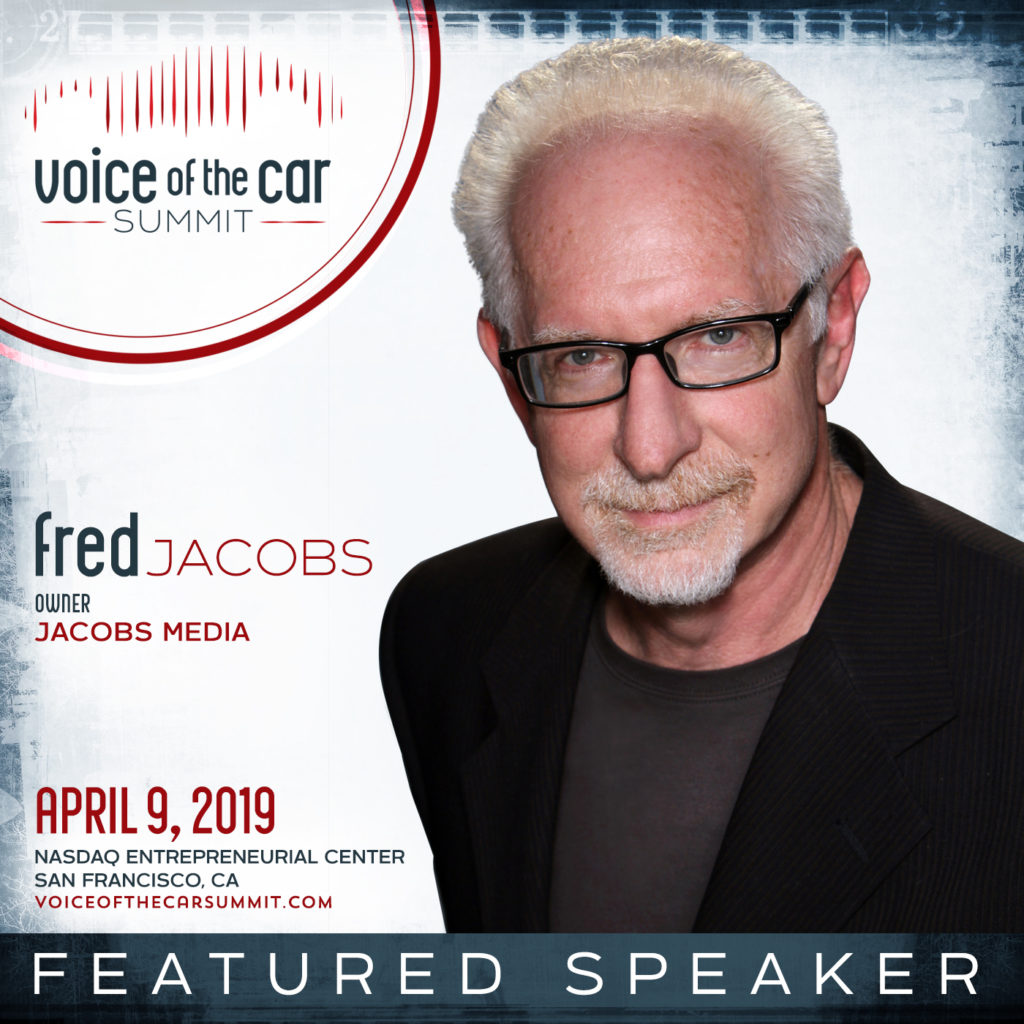
Work with your panelists and speakers on their “virtual looks”
How many conferences and webinars have we seen where a guest is poorly lit, the audio is echoey, and the background looks more like a hostage video? Attention to detail and rehearsal time can solve most of these problems well before the event takes place. There’s a reason why “Room Rater” has become a popular page on Twitter.
David Fishof and Britt Lightning from “Rock n’ Roll Fantasy Camp” do a great job with their Master Classes, making sure their rock stars look and sound great. It provides that same sense of professionalism we expect to see when we attend a concert or major event.
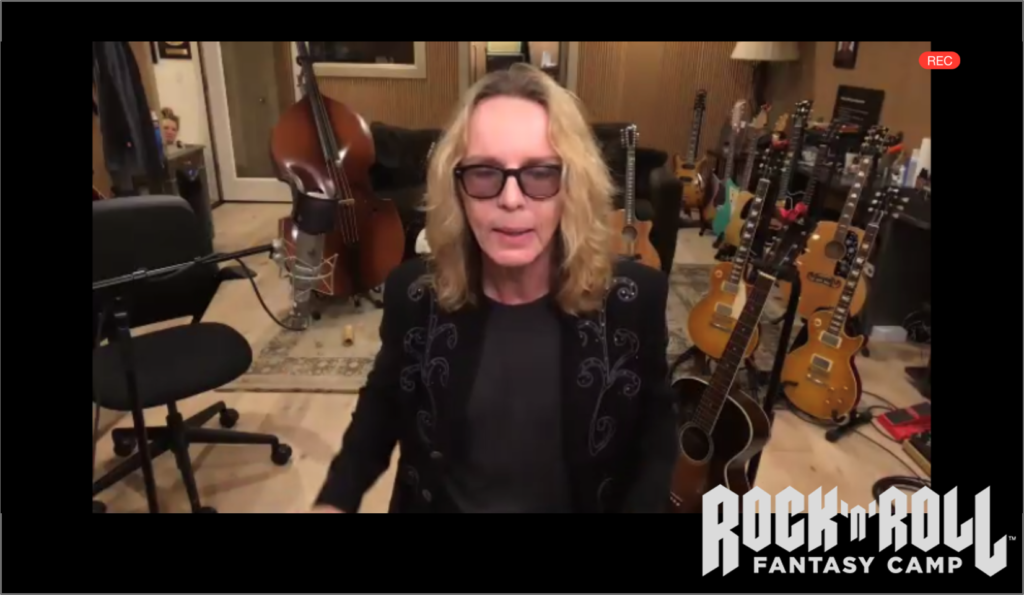
Create partnerships
The Public Radio Program Directors (PRPD) pulled off their first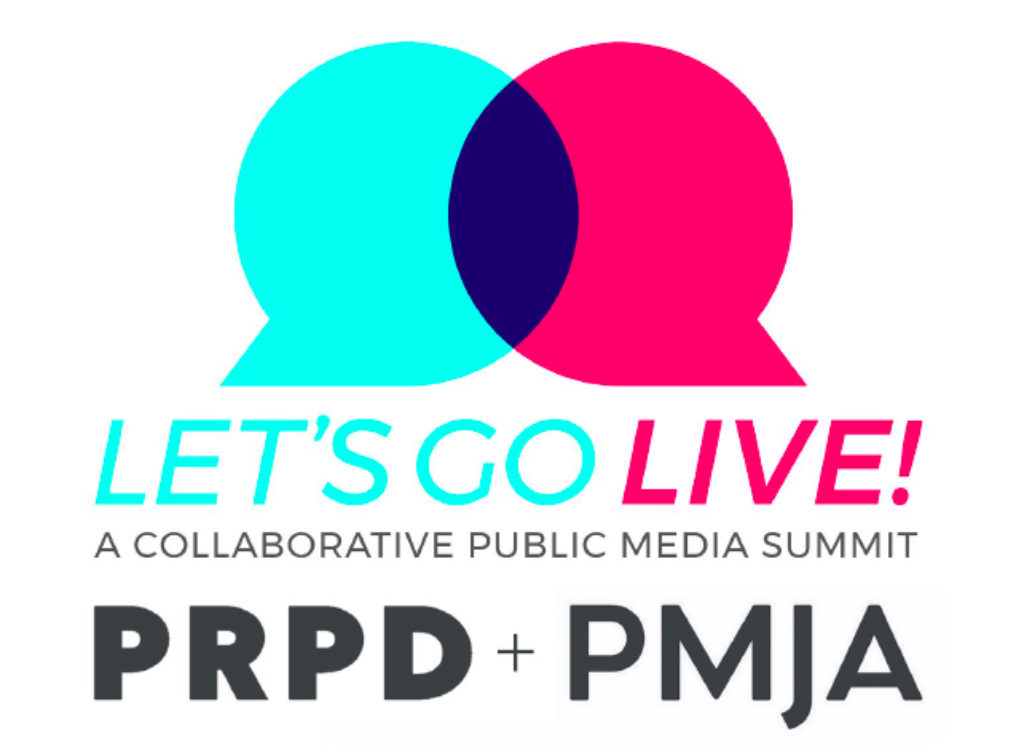 virtual event last year. It became less of a heavy lift when they partnered with the Public Media Journalists Association (PMJA), a like-minded group.
virtual event last year. It became less of a heavy lift when they partnered with the Public Media Journalists Association (PMJA), a like-minded group.
A collaboration can spread the risk and also even out responsibilities – booking, planning, rehearsals, etc.
Be liberal with discount codes
Consumers are always looking for a deal. Give them one. Discount codes can help generate more interest and faster registrations.
Price tickets on the low side, and aim for mass attendance. As we learned on our CES Tour, virtual events give people who ordinarily couldn’t afford to travel to an event the opportunity to come along from the comfort of their offices.
There’s no doubt that even as “normalcy” begins to return this year, a smart virtual plan is the perfect way to bullet-proof your promotional calendar, and take advantage of this burgeoning technology.
Every station needs a Zoom strategy.
- Media And Technology In 2025: Believe It Or Not! - April 18, 2025
- In Radio, You Just Never Know - April 17, 2025
- The Secret To Making A Great Podcast (And Great Radio) - April 16, 2025




Leave a Reply